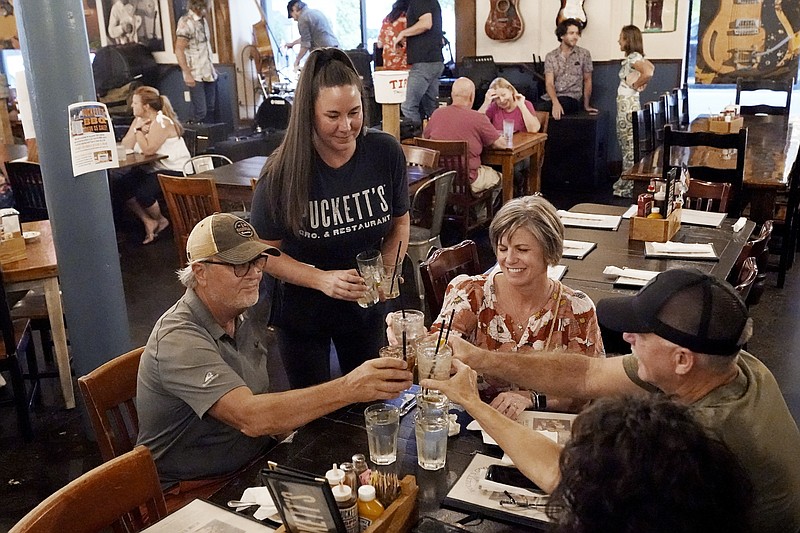NEW YORK (AP) — Downtown businesses in the U.S. and abroad once took for granted nearby offices would provide a steady clientele looking for breakfast, lunch, everyday goods and services and last-minute gifts.
As the resilient coronavirus keeps offices closed and workers at home, some are adapting while others are trying to hang on.
Some businesses are already gone. The survivors have taken steps such as boosting online sales or changing their hours, staffing levels and what they offer customers. Others are relying more on residential traffic.
Many business owners had looked forward to a return toward normalcy this month as offices reopened. But as many companies have postponed plans to bring workers back, due to surging COVID-19 cases, downtown businesses are reckoning with the fact that adjustments made on the fly may become permanent.
In downtown Detroit, Mike Frank’s cleaning business was running out of money and, it seemed, out of time.
Frank started Clifford Street Cleaners eight years ago. Pre-pandemic, monthly revenue was about $11,000, but by last December, when many downtown offices had to close, revenue had dropped to $1,800, Frank said.
Frank had to borrow money from his wife to pay the bills.
“It got down to, I was almost ready to go out of business.”
Instead of shutting down, Frank adapted. He converted part of his store into a small market with toothpaste, laundry detergent, shampoo, bottled water, soft drinks and other essentials. He also delivered clean laundry and goods from the store.
Eventually, some foot traffic returned. With the combination of retail sales and dry cleaning, revenue is back up to about $4,100 per month, he said. That’s enough to keep him afloat, and the figure is improving each month.
In Lower Manhattan, 224 businesses closed their doors in 2020 and 2021, according to the Alliance for Downtown New York. About 100 have opened.
“There’s no question, it’s hard for business districts like ours, we miss our workers,” said Jessica Lappin, president of the Alliance for Downtown New York. “Nobody misses them more than local businesses.”
Lappin predicts office workers will come back, but it might be two or three days a week, on different days or in shifts.
“Just in the way we had to adjust so dramatically to being at home all the time, there is an adjustment to coming back,” she said.
A block from Wall Street, Blue Park Kitchen used to have lines out the door each weekday as office workers waited to buy one of the grain bowls Kelly Fitzpatrick served as a healthy lunch option.
“Things are completely different,” she said.
Online orders now account for 65 percent of the business — although they are less profitable because the online apps take a cut. Higher-margin catering orders remain non-existent and Blue Park has reduced its staff by nine workers.
Fitzpatrick has seen more offices reopen and hopes more companies return in October, before the slower holiday months of November and December.
Nearby, Aankit Malhotra took over Indian restaurant Benares with his brother in 2019. When the pandemic hit, overnight, their core banking clientele vanished. No one came in for the $13 three-course lunch special the restaurant was known for. Previously, lunch accounted for 95 percent of Benares’ business.
Now, Benares has about 10 lunch orders a day, down from 100. But locals, grateful the restaurant kept its pre-pandemic hours of 10:30 a.m.-11 p.m. every day, are keeping the brothers afloat.
Business is back to around 70 percent of pre-pandemic levels, helped by delivery and dinner meals.
Jorge Guzman, assistant professor of business management at Columbia University, said the shift of economic activity away from downtowns is likely to last. There has been a boom in entrepreneurship in non-downtown New York areas like Jamaica, Queens, and the South Bronx.

